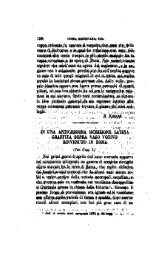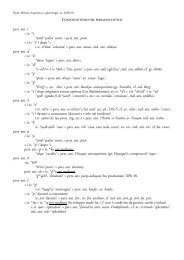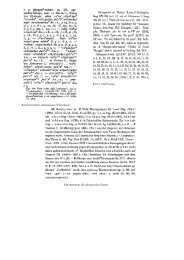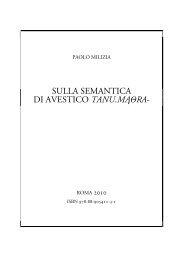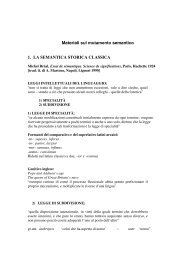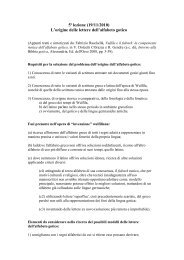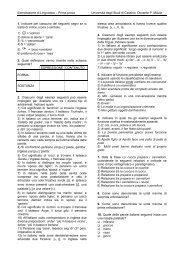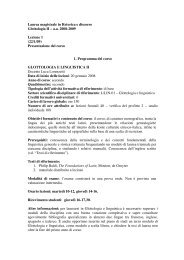Linguistic Society of America
Linguistic Society of America
Linguistic Society of America
Create successful ePaper yourself
Turn your PDF publications into a flip-book with our unique Google optimized e-Paper software.
THE INSCRIPTION OF DVENOS<br />
to propound, that the inscription is an execration. The argument just<br />
presented is my reason for rejecting the theory that it is a love-charm,<br />
to which will be added the arguments from the interpretation later<br />
given; on the other hand, all association with the Novendial sacrifice<br />
disappears when DVENOI NE is read in the third line, instead <strong>of</strong> DZE<br />
NOINE = die noni.<br />
One more point before we proceed to the interpetation <strong>of</strong> the text:<br />
the fact that the three lines are separated by gaps capable <strong>of</strong> holding<br />
several letters, gives a strong presumption that each line is reasonably<br />
complete in itself; and this completeness may be expected to apply both<br />
to sense and to syntax. The point is worth emphasizing, although most<br />
editors have recognized it by implication, and Goldmann has applied it<br />
rigidly.<br />
To take up now the text <strong>of</strong> the inscription, the first line reads as<br />
follows, with the word divisions which I adopt:<br />
IO VEI SAT DEIVOS QOI MED MITAT NEI TED ENDO<br />
COSMIS VIRCO SIED<br />
After the abreviated names <strong>of</strong> the three gods, first recognized by<br />
Deecke (as was mentioned above), there is a word which means 'god'<br />
or 'gods', in some case or other, Morphologically, unless we are to<br />
accept a form without parallel in Latin, it must be either nominative<br />
singular or accusative plural; and the latter is required by the names <strong>of</strong><br />
the three gods, to which it is an obvious appositive. The abbreviations<br />
therefore represent the accusative case.<br />
QOI MED MITAT can hardly mean other than 'he who sends me'.<br />
It is true that Q = qu is not otherwise known, but no conceivable variant<br />
interpretation eliminates this peculiarity. MITAT <strong>of</strong>fers difficulties,<br />
since it seems to be subjunctive in form,=mittat; but the final letter <strong>of</strong><br />
the subjunctive should at this early date be d, the secondary ending,<br />
and not t, which is primary; cf. SIED and FEKED in the inscription,<br />
and the Oscan present subjunctives fakiiad, kahad, putiiad, where the<br />
secondary d is obvious. The T has been explained as showing the be-<br />
ginning <strong>of</strong> the extension <strong>of</strong> primary -t into the realm <strong>of</strong> the secondary<br />
endings,'6 or as a plural with graphic omission <strong>of</strong> the n before the stop;17<br />
but why should the clause have a subjunctive at all?<br />
16 Bucheler, RhM 36. 243; and especially G. Hempl, Trans. Amer. Philol. Assn. 33.<br />
153-4 [1902].<br />
17 R. S. Conway, AJP 10. 452.<br />
211



